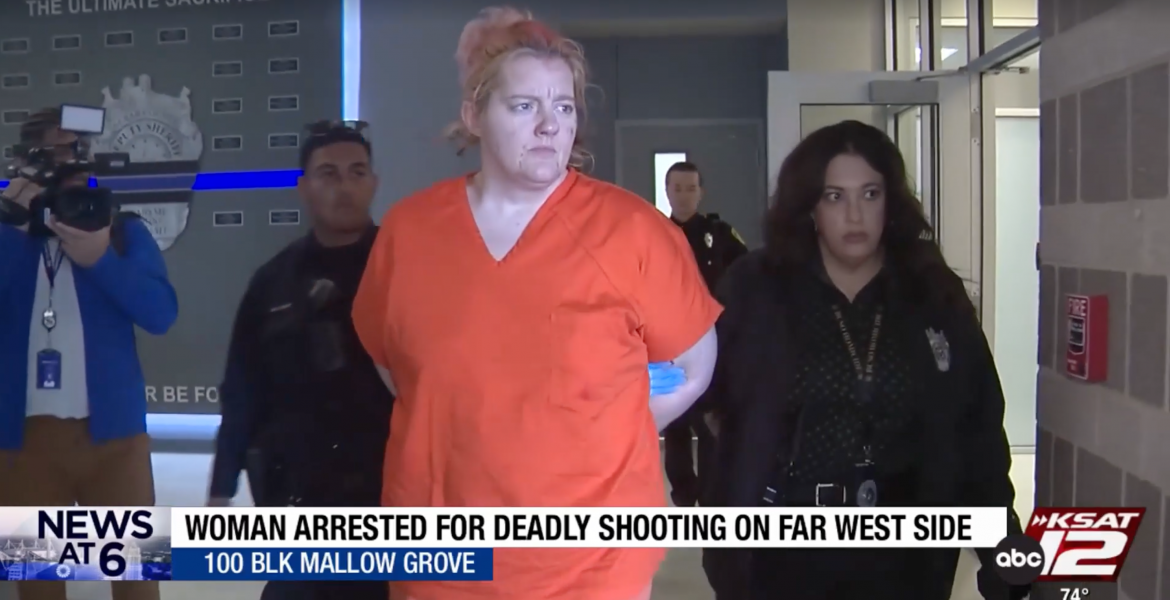Her brother had been dead for one month and 19 days before Louise Chabot heard anything about it. The information was passed through a telephone call from a relative who’d read the news on July 23, 2014.
A short time thereafter, she’d learned his body had been cremated in San Angelo, where court proceedings were underway to pass his fortune over to his criminal defense attorney, the sole beneficiary named in a handwritten will she now found suspect.
John Edward Sullivan, the purported older brother who was 12 years Chabot’s senior, died on June 3, 2014 at approximately 11 p.m. of a sudden cardiopulmonary failure of unknown origin. His body lie slumped over a toilet seat in his San Angelo home until the following afternoon, when his two bail bondsmen, Ray Zapata and Armando Martinez, went looking for him. They hadn’t been able to reach him all afternoon.
When Zapata broke a bathroom window at 516 S. Jefferson and entered the house, he found Sullivan’s corpse and chaos ensued. The following day, defense attorney John Young filed a handwritten will with the county court that was witnessed by Zapata that named himself as the sole beneficiary.
Sullivan’s body, rapidly deteriorating in a refrigerated unit at Shaffer Funeral Home, was cremated some six days later. No autopsy was ever performed.
Louise Chabot was 66 years old and lived in a tiny speck of a town in Worcester County, Massachusetts, just an hour southwest of Boston. Her brother John, she wrote in a two-age affidavit, was 12 years older than she, and both were born to mother Mary Clare Kjellberg—formerly Sullivan, born Morely—who had died on Nov. 29, 2000 in Worcester County.
Kjellberg didn’t have any other children, Chabot claimed, and she and John were born to different fathers. The fathers were not named.
“After learning of my brother’s death and the pending court proceeding, I contacted Victor Samaniego, Sr., in San Angelo,” Chabot wrote. “I had stayed with Mr. Samaniego, his wife, and their children during a visit I had made to San Angelo several decades before.”
Samaniego was familiar with the court case.
Purporting to be a decades-long family friend of the deceased mulit-millionaire, he himself had filed a motion for a new trial on July 15 in the county court, a day shy of a month after Judge Ben Nolan probated the handwritten will on June 16, 2014 and officially turned the estate over to attorney John Young.
“John Edward Sullivan…and I were good friends beginning around 1960 and continuing for the next four decades,” Samaniego wrote in his own affidavit. “I first met John when I volunteered to cook for a cursillo gathering at St. Joseph’s Catholic Church. Over the years, John would eat supper in my home regularly and he and I engaged in several business ventures together.”
One of those business ventures included a 1994 contract between Samaniego and Sullivan, in which Samaniego agreed to purchase four San Angelo houses on a payment plan. When in 2001 Samaniego fell delinquent on his contract, he signed a release of interest and the properties were turned back over to Sullivan.
Some 13 years later, Samaniego now claimed he had interest in the estate because one of those properties, a home at 511 S. Jefferson, still contained his personal and business records.
“…at the time of the settlement, John [Sullivan] did not allow my representatives to enter the house and retrieve my personal and business records, which are substantial,” Samaniego wrote. “It is my understanding that my personal and business records are still sitting in that house.”
Fearing a “hasty sale” of the property if Young were to remain in control of the estate, Samaniego asked the court to appoint an administrator. However, his motion—and all future motions—was denied following a hearing on July 29, two weeks after he had filed his original petition.
Meanwhile, Chabot, who had been mentioned in Samaniego’s affidavit and petition for a new trial in mid-July, learned only of her brother’s death some six days before the judge made a ruling on Samaniego’s motion. She hadn’t learned of it from him. She did, however, contact him after being told of the goings-on in Tom Green County, and set about preparing her own motion for new trial.
“After talking to Mr. Samaniego, I then telephoned several law offices in San Angelo to seek legal representation in Texas,” Chabot wrote. “On July 24, 2014, I talked for the first time to Mark Brown, who is an attorney in San Angelo.”
Three days later, on July 27, Chabot hired Brown to represent her in the case of Sullivan’s estate. Brown was also representing Victor Samaniego, Sr. at the time, although he’d soon lose all right to claim any interest in the estate.
Working quickly to gather the information and pen the motion, Brown filed a two-page document with the county court on July 28 titled “Heir’s Appearance and Motion for New Trial” on behalf of Louise Chabot.
The document was thin and provided little information on the grounds for the request, but in filing, Chabot became the first to question the validity of the will on the record.
“If a new trial were granted, Ms. Chabot would likely contest the testamentary validity of the holographic (handwritten) document filed in this cause on the grounds that neither the writing nor the signature are the Decedent’s…” the motion states.
Chabot wasn’t alone in second-guessing the will’s validity. On June 18, two days after the probate hearing, local attorney Joe Hernandez contacted Texas Ranger Nick Hanna and relayed that he had some concerns and suspicions regarding the death of Sullivan and his handwritten will, which was allegedly written on June 2, two days before his body was found.
Hernandez told Hanna that he’d attended the hearing on June 16, and believed that Ray Zapata, who had been written in as a witness to the will, had actually scrawled the will himself.
Hernandez and Zapata have known each other for years, both working out of an office building at 508 W. Concho. He told the Ranger that he was familiar with both of their handwriting styles, and was fairly certain the writing on the will did not belong to Sullivan. Hanna obtained the will on Aug. 18 for inspection and testing. His investigation continued from there.
But, according to Hanna’s affidavit, Hernandez wasn’t solely concerned with the possibility of a forged document; he also mentioned the existence of a possible heir.
“Following the hearing, Hernandez stated he approached John Young with information pertaining to a known blood relative of John Sullivan,” Hanna wrote in an affidavit. “Hernandez stated that Young became alarmed and asked Hernandez not to tell any of the relatives and requested to meet with Hernandez in the future to ‘buy some of his time.’”
When Chabot emerged as Sullivan’s alleged half-sister, she had the sworn statement of Victor Samaniego on her side. In his July 15 petition, he’d mentioned Louise by name, and also alleged Sullivan had an aunt and female cousin he’d visit annually.
“John had a half-sister named Louise who was younger than John by at least ten years or more,” Samaniego wrote. “She lived out of state. Louise came to San Angelo around 1968 and stayed at my house for several months where I and my wife resided with our children. When Louise was ready to return home, I provided the funds for Louise to do so. John told me Louise later married and had several children. As far as I know, Louise is still alive.”
Although Samaniego’s statement had been filed and referenced by attorney Mark Brown in his first motion for a new trial on July 15, it was apparent that the attorney had not been able to corroborate the existence of the alleged half-sister until he received a phone call from the woman over a month later.
“Although I had known prior to July 23, 2014, that John Edward Sullivan had had a half-sister named Louise who had married and had children, I did not have any information, until July 23, 2014, to indicate that Louise was still alive,” Brown wrote in an affidavit.
Brown stated that he didn’t have contact information or even a last name for Chabot until the following day, which was when the two first communicated via telephone.
By the end of August, cases to contest Sullivan's will case was heating up. Chabot had filed an amended motion for new trial, which included more detail on her objections raised in the first petition and asked the court to overturn the June 16 ruling and grant a new trial.
Again, she challenged the handwriting, stating that there was “…no clerk’s or reporter’s record of sworn testimony that John Young or Ray Zapata was familiar with the Decedent’s handwriting and on what basis that familiarity had been acquired…”
She further stated that being familiar with Sullivan’s writing herself, she could provide new credible evidence that the will was not written by him. Chabot asked that the court name an administrator to the estate if her motion was deemed to have been filed within the time constraints of law and that a hearing be held on her identity as an heir.
Over a month later, on Oct. 6, Young and Zapata filed a response to Chabot’s allegations in the form of several documents that included sworn affidavits written by each of them.
Both men stated in those documents that they were acquainted with Sullivan’s writing and believed the will to be entirely penned by the deceased. Zapata took it a step further when he wrote, “…I personally witnessed John Edward Sullivan handwrite and sign the will in his residence on June 2, 2014.”
According to the affidavits, both men were “personally acquainted” with John Edward Sullivan, and both had become “close” friends of his prior to his death. They also stated that Sullivan had told each of them he “trusted very few” people in this world, Zapata adding, “…but that he did trust John Young”.
Neither Young or Zapata had ever heard mention of any sister.
“I knew John Edward Sullivan personally and the subject of family and friends of his came up in our conversations,” Young wrote. “During such conversations, John Edward Sullivan expressed to me that he had no family and very few friends in this world…[He] personally told me that he was raised in an orphanage and often referred to himself as an orphan. John Edward Sullivan never mentioned to me or indicated to me that he had any family that existed.”
It wasn’t until Young's attorney, Christianson Hartman, notified him that Chabot had filed her original petition that Young learned of her existence, he stated. Zapata also wrote that Louise Chabot was never mentioned to him by his good friend, John Sullivan.
Four months and three days after his body was found in his bathroom, John Sullivan’s alleged half-sister was granted her day in court. A court reporter took down the testimony as Chabot and her attorneys, Mark Brown and George Finley, made their case against John Young.
Despite her efforts to prove her relation to Sullivan and claim his estate, Chabot’s motion for a new trial was denied by Judge Ben Nolen on a number of grounds. Nolan ruled that Chabot had exceeded the 30-day time limit to file a motion for a new trial and further ruled that she hadn’t proven who she is.
“Louise Chabot claims to be the half-sister of to the deceased John Sullivan by virtue of having the same mother; however, the Court finds conflicting testimony and insufficient evidence was presented at this hearing to determine the validity of that claim,” the judge’s order reads.
On Oct. 9, the order was signed denying Chabot a new trial, but she didn’t stop there. On Nov. 24, Chabot’s attorney filed two petitions contesting the validity and construction of will admitted to probate, which raised many of the same objections and requested the court appoint a temporary administrator.
By then, a second civil suit had been filed against John Young as the beneficiary of Sullivan’s estate on behalf of Sullivan’s purported victims, who were seeking monetary relief for damages. The plaintiffs in that case also filed an application to appoint a temporary administrator in January 2015, and on Jan. 13, attorney Michael Deadman was appointed as temporary administrator to the Sullivan estate.
As a Texas Rangers investigation ran in the background, John Young and Ray Zapata were indicted on four felony charges apiece on March 26. Young was charged with first-degree theft of over $200,000, first-degree misapplication by a fiduciary, third-degree aggravated perjury and state jail felony forgery. Zapata was also indicted on a first-degree theft charge, aggravated perjury and two counts of forgery.
Both civil cases are still ongoing. Neither criminal case has had a first hearing.
Subscribe to the LIVE! Daily
Required






Comments
Listed By: J D
It will never cease to amaze me... the gold diggers that come out of the woodworks when a fortune is up for grabs.
"... I'm his 14th cousin by marriage!" gimme gimme gimme!!
- Log in or register to post comments
PermalinkListed By: Old Salt
...and conveniently, the body of the accused pedo was burned, so now, they cannot be sure of what had him slumped over the toilet.
- Log in or register to post comments
PermalinkPost a comment to this article here: